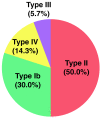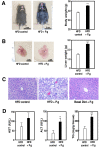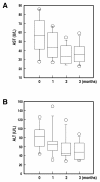Involvement of a periodontal pathogen, Porphyromonas gingivalis on the pathogenesis of non-alcoholic fatty liver disease
- PMID: 22340817
- PMCID: PMC3305584
- DOI: 10.1186/1471-230X-12-16
Involvement of a periodontal pathogen, Porphyromonas gingivalis on the pathogenesis of non-alcoholic fatty liver disease
Abstract
Background: Non-alcoholic fatty liver disease (NAFLD) is a hepatic manifestation of metabolic syndrome that is closely associated with multiple factors such as obesity, hyperlipidemia and type 2 diabetes mellitus. However, other risk factors for the development of NAFLD are unclear. With the association between periodontal disease and the development of systemic diseases receiving increasing attention recently, we conducted this study to investigate the relationship between NAFLD and infection with Porphyromonas gingivalis (P. gingivalis), a major causative agent of periodontitis.
Methods: The detection frequencies of periodontal bacteria in oral samples collected from 150 biopsy-proven NAFLD patients (102 with non-alcoholic steatohepatitis (NASH) and 48 with non-alcoholic fatty liver (NAFL) patients) and 60 non-NAFLD control subjects were determined. Detection of P. gingivalis and other periodontopathic bacteria were detected by PCR assay. In addition, effect of P. gingivalis-infection on mouse NAFLD model was investigated. To clarify the exact contribution of P. gingivalis-induced periodontitis, non-surgical periodontal treatments were also undertaken for 3 months in 10 NAFLD patients with periodontitis.
Results: The detection frequency of P. gingivalis in NAFLD patients was significantly higher than that in the non-NAFLD control subjects (46.7% vs. 21.7%, odds ratio: 3.16). In addition, the detection frequency of P. gingivalis in NASH patients was markedly higher than that in the non-NAFLD subjects (52.0%, odds ratio: 3.91). Most of the P. gingivalis fimbria detected in the NAFLD patients was of invasive genotypes, especially type II (50.0%). Infection of type II P. gingivalis on NAFLD model of mice accelerated the NAFLD progression. The non-surgical periodontal treatments on NAFLD patients carried out for 3 months ameliorated the liver function parameters, such as the serum levels of AST and ALT.
Conclusions: Infection with high-virulence P. gingivalis might be an additional risk factor for the development/progression of NAFLD/NASH.
Figures




References
-
- Angulo P. Nonalcoholic fatty liver disease. N Engl J Med. 2002;18:1221–1231. - PubMed
-
- Ludwig J, Viggiano TR, McGill DB, Oh BJ. Nonalcoholic steatohepatitis: Mayo Clinic experiences with a hitherto unnamed disease. Mayo Clin Proc. 1980;55:434–438. - PubMed
-
- Liou I, Kowdley KV. Natural history of nonalcoholic steatohepatitis. J Clin Gastroenterol. 2006;40:(Suppl 1):S11–S16. - PubMed
-
- Diehl AM, Goodman Z, Ishak KG. Alcohol-like liver disease in nonalcoholics. A clinical and histologic comparison with alcohol-induced liver injury. Gastroenterology. 1998;95:1056–1062. - PubMed
Publication types
MeSH terms
LinkOut - more resources
Full Text Sources
Other Literature Sources

